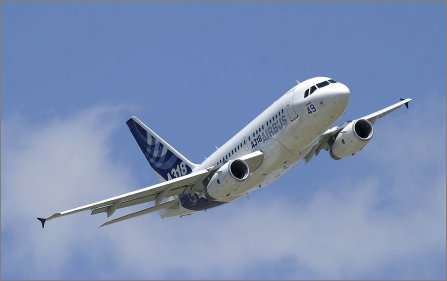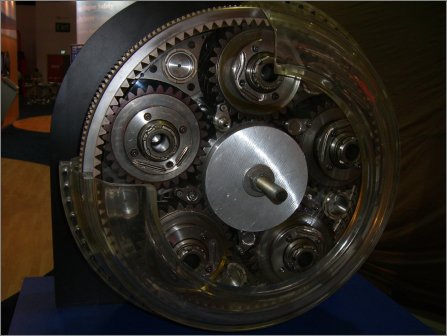Pratt & Whitney believes passionately in the geared turbofan, despite repeated setbacks, and is determined to make it work for the 21st century
Pratt & Whitney’s long-standing passion, some might say obsession, for the geared turbofan (GTF) concept is well known. Equally familiar, however, is the frequency over the past 20 years with which this apparently promising technology has either failed to live up to its promise, or been ruled out on the grounds of high cost, or risk, or both.
|
P&W's PW6000 developed for the A318, provides for the core of its GTF venture |
Despite this uncertain legacy, P&W has maintained its belief in the concept and is determined to make the GTF its 21st century technological front runner for the Holy Grail of forthcoming commercial aircraft markets: the powerplant for the Airbus A320 and Boeing 737 successors. But to get there, P&W knows it must win both the technology battle as well as the public relations war.
P&W Commercial Engines president Steve Heath is refreshingly frank when facing up to the challenges ahead. “One of the key things we’ve been dealing with are questions like ‘why is this going to be different or successful this time around?’”
The industry still echoes to distant memories of the Superfan fiasco of the 1980s, and recalls witnessing the disappointing end later that decade to the once promising Propfan demonstrator engine that relied on closely allied fan-drive technology.
Issues a drag
Heath believes the tough requirements for the next-generation of single-aisle aircraft will provide the imperative for a development such as the GTF. “There has been no step change in propulsion efficiency and we’ve been working out how to get that. It’s all about bypass ratio and key issues of weight and drag.” If it delivers on its promise, the GTF has the potential to cut fuel burn by up to 12% and noise by as much as 31dB compared with a contemporary Stage 3 engine.
But why the GTF and what is so different about the concept this time? “We’ve looked at geared fans several times through the years, but I don’t know when we’ve had such a comprehensive approach,” says Heath, referring to a welter of ongoing and planned rig and engine tests all of which will culminate in a GTF ground engine demonstration in the last quarter of 2007. “There is also tremendous interest in the programme in terms of the commitment from P&W,” adds Heath.
|
Planetry gear systems, like this test unit shown at the recent Asian Aerospace, will form the heart of the GTF |
The company is spending around $100 million a year on the GTF effort “and will continue to spent that until well beyond product launch”. P&W parent company United Technologies (UTC) recently agreed to step up funding for the GTF in the wake of severe cuts to NASA’s aeronautics research budget at the start of 2006. There were at least two solid reasons for UTC’s decision: P&W’s compelling performance forecasts for the engine and the critical need to support the engine maker’s “must-win” bid to provide a powerplant for the next generation of single-aisle airliners.
P&W supports 36%, or roughly 15,000 of the 41,400 engines in the Western-operated commercial fleet. Although this compares favourably with General Electric’s 13% and Rolls-Royce’s 11% share, it will soon be eclipsed by CFM International, in which GE holds 50%. CFMI’s share of around 33% is set to grow, while P&W’s share, much of it still based on the JT8D, will inevitably diminish. Despite the fact that CFM rival International Aero Engines (IAE), in which both P&W and R-R are major shareholders, continues to grow strongly with a 6% share, P&W demands more and sees the GTF as its trump card.
P&W made its fortune with the JT8D and the short-haul market and hopes the GTF will help it repeat that success. “The biggest piece of the market by volume is still in the short-haul single-aisle market,” says Heath, who sees the sector accounting for around 14,625 of the 19,920 new commercial aircraft forecast for delivery between now and 2024. Even more intriguingly, the GTF plan is built around a core that could also provide the basis for lower-thrust engines. “If we could cover everything from regionals and business jets to the single-aisle market we’d have a home run. So we’d like to make sure the core is in the ’sweet spot’,” adds Heath.
Thrust range
The production GTF is expected to cover the 24,000-40,000lb thrust (105-180kN) range, “with a likely focus in the 25,000-35,000lb area”, he adds. Although the initial test version is aimed at 30,000lb thrust and will have a 2m (80in)-diameter fan, “the production version will end up being around 77in,” Heath says.
To hit the “sweet spot” P&W is embarked on a multi-pronged integrated technology development encompassing low-pressure (LP), high-pressure (HP) and system level initiatives. The LP, or low spool, focus is on the fan-drive gear system itself as well as composite fan blades and a high-speed LP compressor. The core technologies focus is on refinements to the latest generation of the Talon-X low emissions combustor, an advanced two-stage HP turbine and a new HP compressor using integrally bladed rotors, in which blades are part of the disk rather than being attached. Ground-rig testing of the new eight-stage, 17:1 pressure-ratio compressor started in February at MTU in Munich as part of the Joint Technology Demonstrator programme.
|
|
Systems level technologies include advanced prognostic and health management systems as well as design concepts for a “slim-line” nacelle. This latter area is widely considered the make or break aspect of the entire GTF concept, largely because the higher the bypass ratio, the greater the drag and weight. Many sceptics believe these losses would erode most of the inherent benefits of the concept and without significant breakthroughs in this area, some say it could be a show stopper. “We’re looking at active boundary layer control, which forces air through the inlet to create a ‘virtual’ nacelle lip that would be larger than the real one,” says Heath.
Other nacelle-related treatments under study include variable-area nozzles. “We’re also looking at these because when you get low in fan speed you may need to vary the area behind the fan to ensure fan stability,” says Heath, who adds the most promising studies indicate a simple two-position system.
Meanwhile, rig tests are under way in four main sectors to support the build-up to the first GTF ground demonstration engine in late 2007. The first of these is a series of fan and HP compressor aerodynamic tests starting in less than three months with a 0.55m-diameter fan rig, followed in the third quarter of 2006 by work on an HP compressor rig. A second set of rig tests will evaluate the Talon-X in late 2006 and a next-generation single-aisle-sized Talon-X version in late 2007. Mechanical systems tests are also under way on tapered roller bearings and high speed seals. The all-important GTF gear system rig test is set for the second quarter of 2007. Turbine rig tests into advanced sealing and cooling materials are also set for mid-2006 and late 2007.
Engine tests in December 2005 on a modified V2500 and tests on the modified PW6000 in 2006 are “aimed at maturing component technologies and enablers for the geared turbofan [bearings],” says P&W, which adds that “neither engine incorporated the fan-drive gear system”. The V2500 tests looked at advanced turbine-sealing concepts that may save weight and reduce turbine disk temperatures.
All-important test
The all-important fan-drive gear system test in 2007 will use the PW6000 HP core and a new LP system incorporating the Avio-designed gear system. Initially aimed at just ground testing, Heath says: “I’d like the ground demo engine to be capable of flight test, so I’ve redirected the engineering team to do a ground demo engine that can be flight tested. This will give us confidence and ensure that all test issues associated with it can be sorted out.” Flight tests could take place as early as 2008.
Equally importantly, Heath says “we probably need to do as much convincing of our partners in IAE as we do with the aircraft manufacturers and the airlines”.He says R-R and P&W “recognise that the IAE franchise needs to keep going”.
GUY NORRIS / LOS ANGELES
Source: Flight International

















































